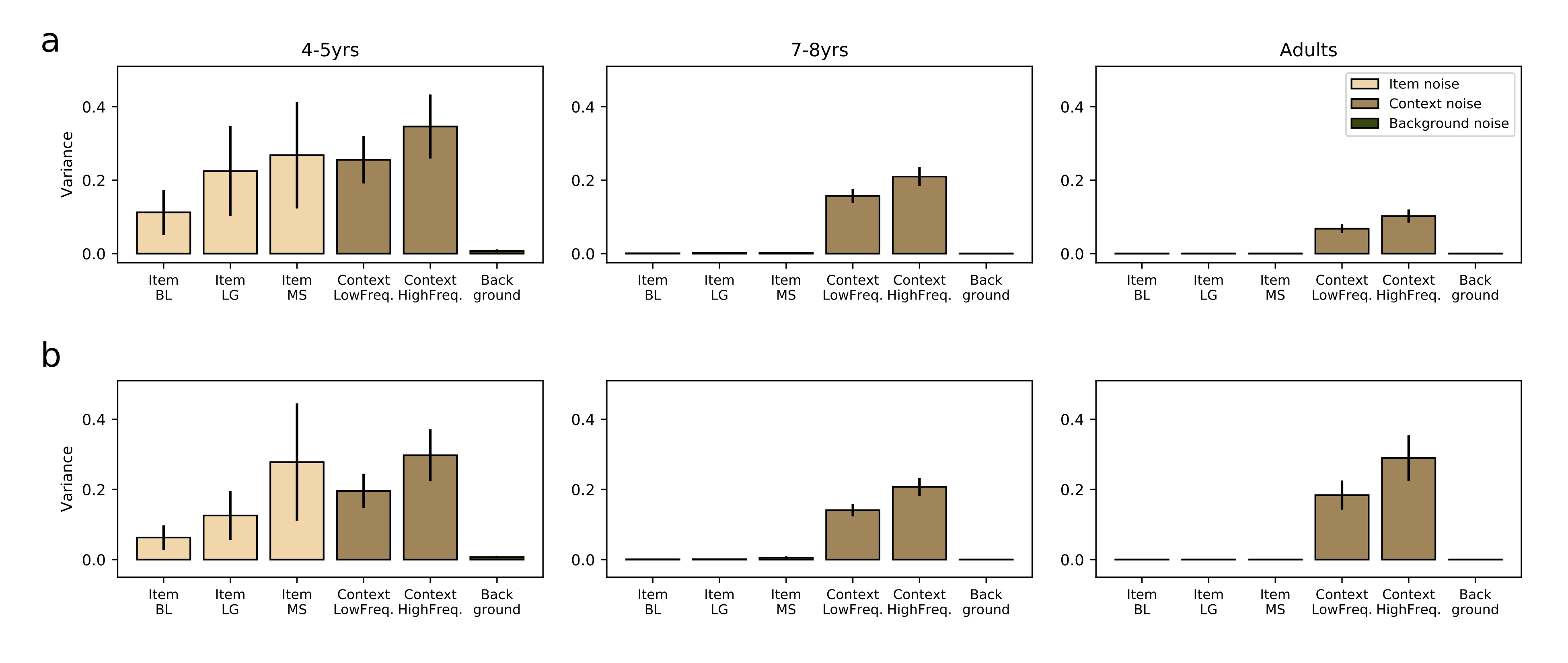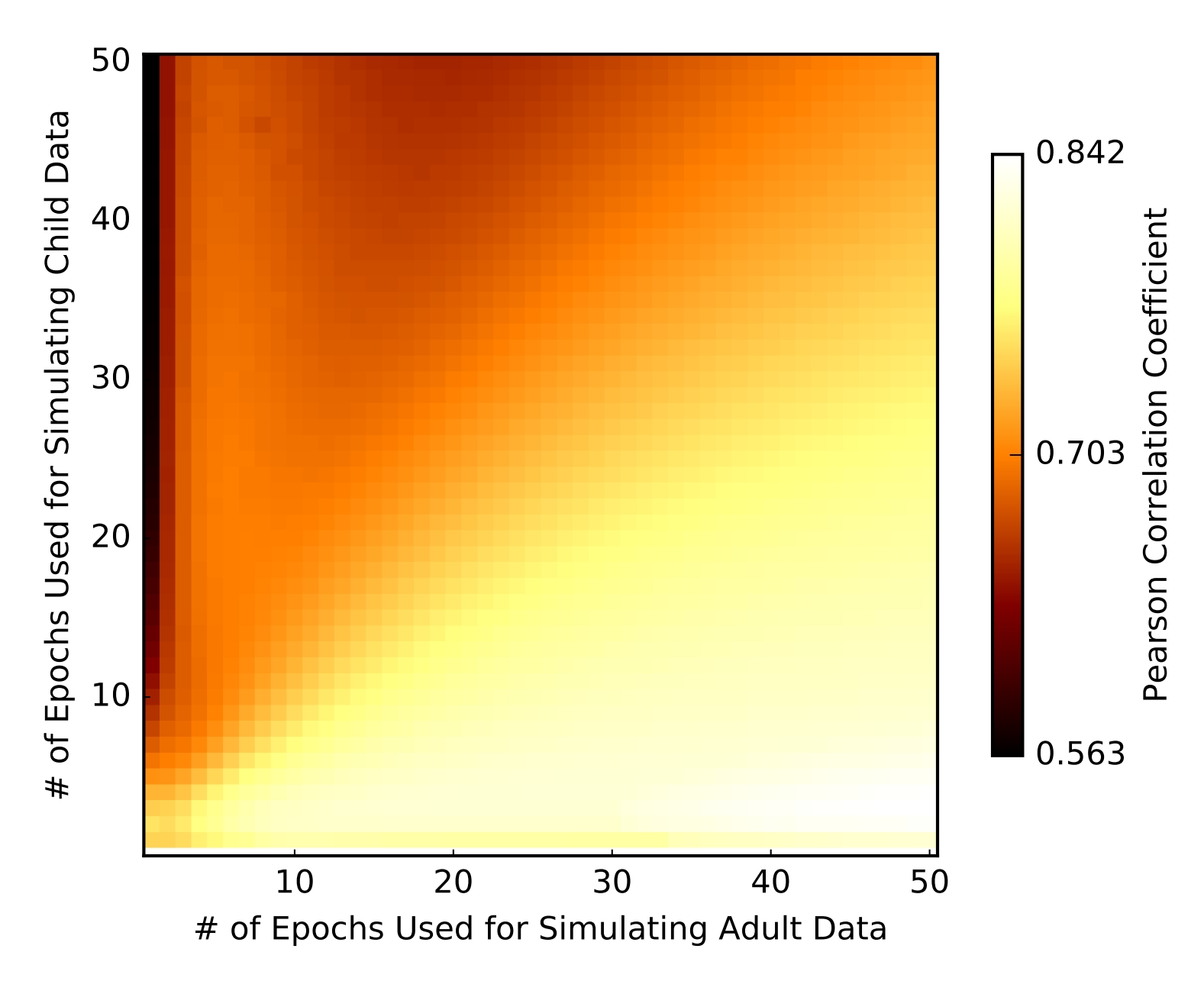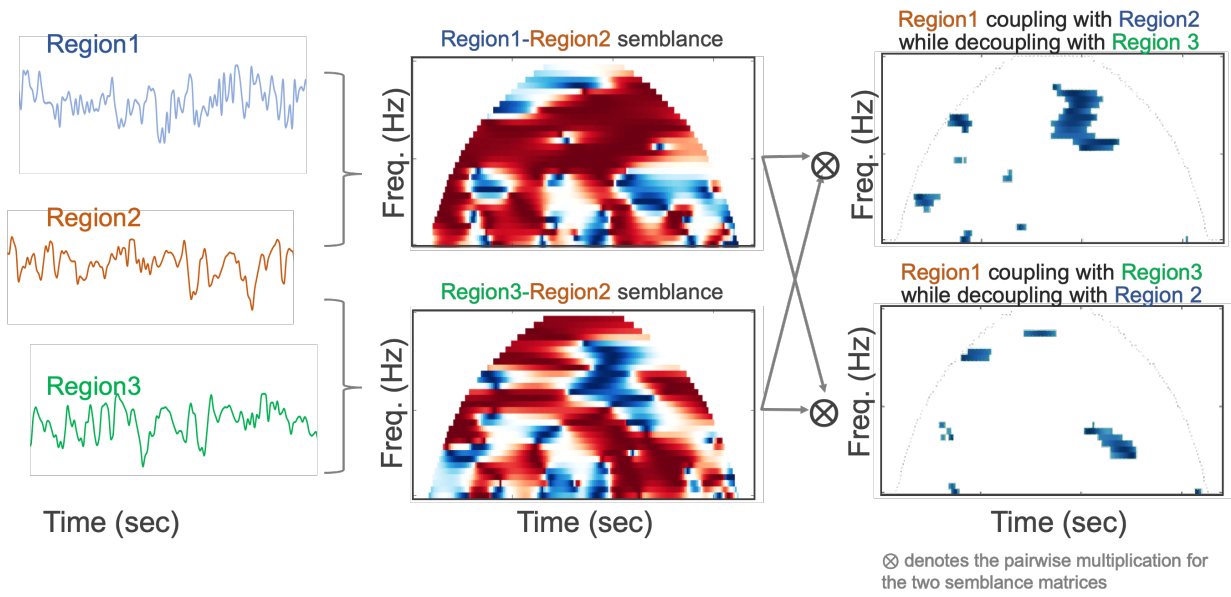As computational cognitive scientists, the lab's interest is to scientifically understand 'the origins of knowledge', which questions how knowledge is initially acquired, and becomes organized and generalized beyond what has been acquired. Relatedly, our research focus is in human memory (including but not limited to episodic/semantic memory), memory development, category/concept learning (and its development). Methodologically, we have been examining human (infants, children, and adults) behavior using various methods such as eyetracking, and experience sampling (EMA). We also use and build computational (cognitive) models and statistical methods to better explain these behavioral patterns such as multinomial processing tree models, hierarchical Bayesian models, neural network models, reaction time models, semblance-based analysis, and various AI/machine learning models/tools.
>> Some of the research topics include:


- How the sources of noise (interference) in episodic memory change across development and context.
- Yim, H., Osth, A. F., Sloutsky, V. M., & Dennis, S. J. (in press). Sources of Interference in Memory across Development. Psychological Science
- Yim, H., Dennis, S. J & Sloutsky, V. M. (2021). Examining Three-way Binding as a Constraint on Statistical Learning. Journal of Experimental Psychology: Learning, Memory, and Cognition, 47(1), 75-86.
- Yim, H., Osth, A. F, Sloutsky, V. M. & Dennis, S. J. (2018). Evidence for the Use of Three-way Binding Structures in Associative and Source Recognition. Journal of Memory and Language, 100, 89-97.

- How the development of selective attention affect category learning.
- How the learning mechanisms of categorization change across development and context.
- Best, C. A., Yim, H., & Sloutsky, V. M. (2013). The Cost of Selective Attention on Category Learning: Developmental Differences between Adults and Infants. Journal of Experimental Child Psychology, 116, 105-119
- Yim, H., Castro, L., Wasserman, E. A., & Sloutsky, V. M. (2014). The interaction of supervision and category structure in category learning: a comparative approach. In P. Bello, M. Guarini, M. McShane, & B. Scassellati (Eds.) Proceedings of the 36th Annual Conference of the Cognitive Science Society, (pp. 787-792). Austin, TX: Cognitive Science Society.
- Yim, H., Best, C. A., & Sloutsky, V. M. (2011). Cost of Attention as an Indicator of Category Learning. In L. Carlson, C. Holscher, & T. Shipley (Eds.) Proceedings of the 33rd Annual Conference of the Cognitive Science Society, (pp. 1724-1729). Austin, TX: Cognitive Science Society.


- How does the human mind organize knowledge from birth?
- What are the learning mechanisms of semantic cognition and organization (e.g., syntagmatic-paradigmatic associations)?
- How does different context affect these knowledge structures and can these knowledge structures reveal individual difference?
- Sloutsky, V. M., Yim, H., Yao, X., & Dennis, S. J. (2017). An Associative Account of The Development of Word Learning. Cognitive Psychology, 97, 1-30.
- Yim, H., Savic, O., Barkhimer, A., Sloutsky, V., & Dennis, S. J. (2021). The Mystery of Early Taxonomic Development. In Fitch, T., Lamm, C., Leder, H., & Teßmar-Raible, K. (Eds.) Proceedings of the 43rd Annual Conference of the Cognitive Science Society, (pp. 3103-3108).. Austin, TX: Cognitive Science Society
- Yim, H., Savic, O. Unger, L., Sloutsky, V., & Dennis, S. J. (2019). Can Paradigmatic Relations be Learned Implicitly?. In Goel, A., Seifert, C., & Freksa, C. (Eds.) Proceedings of the 41st Annual Conference of the Cognitive Science Society, (pp. 3389). Austin, TX: Cognitive Science Society.

- Tools for eyetracking analysis.
- Rivera, S., Best, C. A., Yim, H., Walther, D., Sloutsky, V. M., & Martinez, A. (2012). Automatic selection of eye tracking variables in visual categorization for adults and infants. In N. Miyake, D. Peebles, & R. P. Cooper (Eds.) Proceedings of the 34th Annual Conference of the Cognitive Science Society, (pp. 2240-2245). Austin, TX: Cognitive Science Society.
- Analysis for detecting neural coupling (semblance-based).
- Chen, Y., Uljarevic, M., Neal, J., Greening, S., Yim, H.*, Lee, T.* (in press). Excessive functional coupling with less variability between salience and default-mode networks in Autism Spectrum Disorder. Biological Psychiatry: Cognitive Neuroscience and Neuroimaging *co-corresponding authors.
- Analysis for expericence sampling data.
- Dennis, S. J, Garrett, P., Yim, H., Hamm, J., Osth, A. F., Sreekumar V. & Stone, B. (2019). Privacy versus Open Science. Behavior Research Methods, 51(4), 1824-1838.
- Dennis, S. J, Yim, H., Garrett, P., Sreekumar V. & Stone, B. (2019). A system for collecting active and passive experience sampling data. Behavior Research Methods, 51(4), 1839-1848. [PDF]
- Yim, H., O''Brien, C. R., Stone, B., Osth, A., & Dennis, S. J. (2020). Using Emails to Quantify the Impact of Prior Exposure on Word Recognition Memory. In Denison, S., Mack, M., Xu, Y., Armstrong, B. C. (Eds.) Proceedings of the 42nd Annual Conference of the Cognitive Science Society, (pp. 185-190). Austin, TX: Cognitive Science Society.
- Yim, H., Ong, B.W.R., Stone, B., & Dennis, S. J. (2019). Understanding Human Memory for Where using Experience Sampling Data. In Goel, A., Seifert, C., & Freksa, C. (Eds.) Proceedings of the 41st Annual Conference of the Cognitive Science Society, (pp. 3390). Austin, TX: Cognitive Science Society.
>> Research Collaborators:
- Vladimir Sloutsky (The Ohio State University, USA) [LINK]
- Simon Dennis (The University of Melbourne, Australia) [LINK]
- Adam Osth (The University of Melbourne, Australia) [LINK]
- Edward Wasserman (The University of Iowa, USA) [LINK]
- Leyre Castro Ruiz (The University of Iowa, USA) [LINK]
- Simon De Deyne (The University of Melbourne, Australia) [LINK]
- Olivera Savic (Basque Center on Cognition, Brain & Language (BCBL), Spain) [LINK]
- Tae-ho Lee (Virginia Tech., USA) [LINK]
- Mirko Uljarevic (Stanford University, USA) [LINK]
- Jae-hyuk Cha (Hanyang University, Republic of Korea) [LINK]